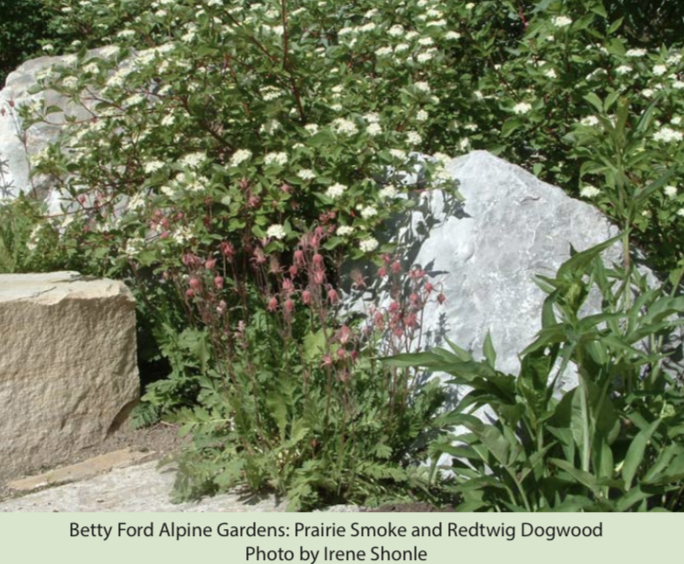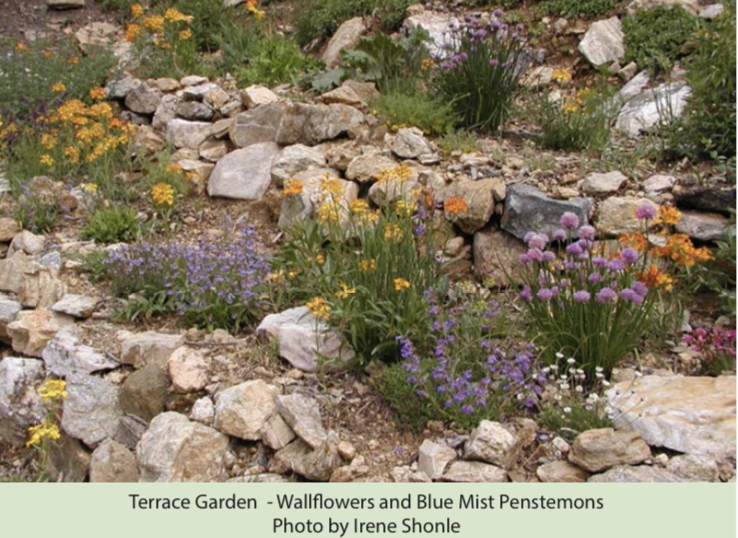By Karen Vanderwall and Deb Lebow Aal
Many of you live, or garden, at high elevations, and we’ve heard that sometimes you feel neglected in that we don’t address your specific issues at elevation. Well, here we will. If you live “high,” and we will define that as above 7,500 feet, you have many unique challenges, including:
- Low temperatures are lower and can change very quickly
- Plant growth is slowed by cool mountain soil temperatures
- Plants growing at higher altitudes are exposed to higher UV levels, and can become sunburned during periods of intense sun (and, conversely, plants can get the sunlight they need for photosynthesis in shorter amounts of time)
- Higher elevations in general receive more precipitation. Cooler temperatures mean more morning dew, which plants appreciate
- Snow lasts longer, shortening the growing season, but adding moisture slowly, allowing the soil to gradually absorb water
- Lower air density translates into less oxygen and carbon dioxide for plants, slowing their growth

Knowing these challenges, here are some tips and tricks we’ve gleaned, mostly from talking to those of you with these challenging landscapes. And before reading this, there are two very good sources of information for you. First, the brochure: Low-Water Native Plants for Colorado Gardens: Mountains 7.500’ feet and above, and second, CSU Extension’s fact sheet: Colorado Mountain Gardening Basics, Fact Sheet 7.244. While not repeating what is in those excellent sources, here are our thoughts:
- Patience! Things grow slowly in the mountains. And, it’s always best to start with smaller, younger plants, rather than installing larger, more mature plants — meaning, it may take a while to get the garden you’ve dreamed of.
- Take cues from mother nature: It’s hard to imagine doing better than she did. So, take a hike and really key in on which plants grow together, and what looks good together. And, perhaps realize that maybe you don’t want to change what you have. If you are lucky enough to be in a relatively unspoiled environment, you may have a bigger burden than those of us gardening in areas where every inch has been developed. Maybe, leave well enough alone?
- Use rocks, trees and evergreen foliage to define your space: A backdrop border always enhances a garden. A natural one is ideal.

- Ask not “Will it grow?” but “Should it grow?” (Hence… native plants!): Don’t try to force plants that cannot handle harsh conditions. You might like those flashy delphiniums, but do they really belong there? Plants native to your particular area will do best.
- A concentrated growing season means overlapping perennial blooms that may not occur at lower elevations. Again, check out your nearby natural areas to see what blooms when, and with what, and design with that in mind.
- The lowest, coldest temperature is the defining factor of a plant’s ability to succeed, so pay attention to your USDA Plant Hardiness Zone, as that’s what’s important. You can also check the National Wildlife Federation’s native plant finder, put in your zip code, and find which native plants are best for hosting caterpillars and moths, an important piece of information if gardening for the ecosystem.
- Microclimates are really important. Find areas around your yard that are warmer or more protected, and plant your less hardy plants there. Near your house on the sunny side will have a slightly longer growing season. Areas near large rocks provide more heat and may extend the growing season or create pockets of moisture. In fact, install some large rocks for that purpose.
- Pay attention to fire-wise landscaping, as fire is a necessity and always a danger here in the Colorado mountains. The zone near your house should have fewer, or no, plants, with gravel or rock mulch. See Fire Resistant Landscaping and Colorado Native Plants, a resource in the WOFR Toolkit.
- As at lower altitudes, select a variety of plants that will bloom all season long, for your pollinators and birds. Once again, I refer you to our brochure, Low-Water Native Plants for Colorado Gardens (for the mountains), for bloom times.
- Containers with plants look so vibrant at high altitude. The intense sunlight makes the bloom colors more intense. Have a container or two around for color!
- Voles, deer, moose, elk, rabbits, oh my! We have to face the fact that we are living in their habitat, so fighting them is almost always a losing battle. Try not to grow plants they’ll be attracted to (poppies!), or plant an outer perimeter of flowers they do like to try to keep the animals out there; we’ve even heard of rabbit feeding stations that work (e.g., placing alfalfa cubes and other things they like at the perimeter of your garden). The hills are alive— this seems to be the challenge all mountain gardeners face. There is no easy solution that seems to work all the time.
We each come at our garden differently, with our own version of an oasis. Whatever yours is, have fun with it. Nature can be a cruel teacher, especially at elevation, so approach gardening on high with patience, humor, and flexibility, and you’ll be fine. Somehow, we have to laugh at, and maybe accept, what that vole just did to your new flower bed. That’s nature at work!
